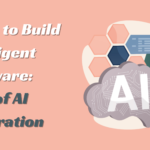How Do Data Center and Cloud Computing Power Modern Economies?
- 1 How do data centres and cloud computing power modern economies?
- 1.1 First Impressions: The Gateway
- 1.2 Edge Computing Expansion
- 1.3 Hyperscale Data Centers
- 1.4 The Hardware Symphony
- 1.5 AI-Driven Thermal Management: Smart Cooling Solutions
- 1.6 The Fiber-Optic Network: Data’s Fast Lane
- 1.7 Security Fortress: Fortifying the Data
- 1.8 Green Initiatives: Sustainability Matters
- 1.9 The Human Element: Behind the Scenes
- 1.10 The Future Horizon
- 1.11 A Digital Ecosystem
Data exists in this era across multiple storage facilities, the edge, and public and private clouds. A data centre must be able to communicate across these various sites, both on-premises and in the cloud. Even the public cloud is a collection of data centres. Applications hosted on the cloud use data centre resources from the cloud provider. According to a study, the the global data center industry will reach USD 342 billion in size in 2024.
How do data centres and cloud computing power modern economies?
First Impressions: The Gateway
Visualize yourself at a data centre—the skyscraper doesn’t come to mind, and the bustling street is not what you see. Instead, it will likely be a nondescript building, deliberately not extravagant, to avoid being noticed and maintain security. It’s those subconscious thoughts that will make everything fall into place. Walking in, you can feel the cool breeze and the oz muted sound of machines. It is a controlled environment, meticulously set with an interconnecting system to keep the machines in perfect shape.
Edge Computing Expansion
Data centres strategically deploy edge nodes, bringing processing power closer to end-users and IoT devices, improving latency, and supporting applications like autonomous vehicles and smart cities.
Hyperscale Data Centers
Driven by big data analytics and AI, hyperscale data centres are scaling up to handle massive workloads efficiently, focusing on scalability, reliability, and energy efficiency in future projects.
The Hardware Symphony
Data centres are supported by servers, which are their backbone. Visualize them as diligent employees, always working, processing, and keeping data. The servers come in various forms and dimensions that neatly vary in size and are found together in stacks. Every server nowadays has its job, and the most common tasks include servicing websites, file storage, or running sophisticated algorithms for scientific analysis.
Keeping It Chill
AI-Driven Thermal Management: Smart Cooling Solutions
Artificial intelligence (AI) transforms data centre cooling through predictive analytics and dynamic thermal management. AI algorithms analyze temperatures, workloads, and environmental factors in real-time, minimizing energy waste and downtime risks while optimizing performance.
The Fiber-Optic Network: Data’s Fast Lane
Thanks to fibre-optic cables, data travels at the speed of light within a data centre. These thin strands of glass or plastic carry vast amounts of information across vast distances with minimal signal loss. It’s like the superhighway of data, enabling seamless communication between servers, networks, and the outside world.
Security Fortress: Fortifying the Data
Data centres are fortresses of security. Access control systems, biometric scanners, and round-the-clock surveillance protect against unauthorized entry. Redundancy is also vital—multiple power sources, backup generators, and data backups ensure continuity despite unexpected events.
Green Initiatives: Sustainability Matters
As digital demands grow, so does the need for sustainable practices. Many data centres are adopting green technologies like energy-efficient cooling systems, renewable energy sources, and recycling initiatives. It’s a collective effort to reduce the environmental footprint while meeting the world’s data needs.
The Human Element: Behind the Scenes
While machines power data centres, skilled professionals keep everything running smoothly. From data centre technicians to network engineers, these experts monitor performance, troubleshoot issues, and plan for future expansions. Their blend of technical expertise and problem-solving keeps the digital world spinning.
The Future Horizon
The world of data centres is ever-evolving. Trends like edge computing bring processing power closer to users, reducing latency for real-time applications. Artificial intelligence and automation streamline operations, making data centres more efficient and responsive—the future promises even more significant innovations, shaping how we interact with digital infrastructure.
A Digital Ecosystem
Data centres are much more than just buildings with a bunch of servers; they are the support system of the digital economy. From cloud computing to online streaming, they are, in large part, the human element that we constantly overlook. Every time you browse the web or watch your favourite movie, you may at least pause to thank the people you don’t see who are working tirelessly to make it possible.
Finally, data centres nurture our digital age in connection, safety, and eco-awareness. This is the mysterious side of the screen where things are not always what they seem, but this behind-the-scenes of the inconspicuous facades fuel the very foundation of our connected world. Consequently, the humongous applause goes to the data centres, the unsung heroes of the internet revolution!


















